 W
WPredation is a biological interaction where one organism, the predator, kills and eats another organism, its prey. It is one of a family of common feeding behaviours that includes parasitism and micropredation and parasitoidism. It is distinct from scavenging on dead prey, though many predators also scavenge; it overlaps with herbivory, as seed predators and destructive frugivores are predators.
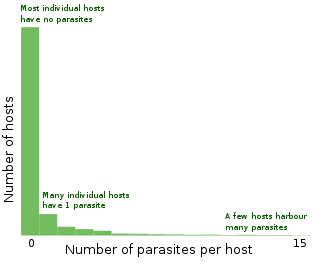 W
WAn aggregated distribution, commonly found among predators and parasites, is a highly uneven (skewed) statistical distribution pattern in which they collect or aggregate in regions, which may be widely separated, where their prey or hosts are at high density. This distribution makes sampling difficult and invalidates commonly-used parametric statistics. A similar pattern is found among predators that search for their prey.
 W
WAmbush predators or sit-and-wait predators are carnivorous animals that capture or trap prey by stealth, luring or by strategies utilizing an element of surprise. Unlike pursuit predators, who chase to capture prey using sheer speed or endurance, ambush predators avoid fatigue by staying in concealment, waiting patiently for the prey to get near, before launching a sudden overwhelming attack that quickly incapacitates and captures the prey.
 W
WAnti-predator adaptations are mechanisms developed through evolution that assist prey organisms in their constant struggle against predators. Throughout the animal kingdom, adaptations have evolved for every stage of this struggle, namely by avoiding detection, warding off attack, fighting back, or escaping when caught.
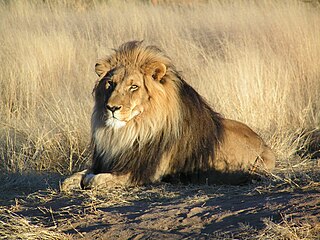 W
WAn apex predator, also known as an alpha predator or top predator, is a predator at the top of a food chain, without natural predators.
 W
WAquatic feeding mechanisms face a special difficulty as compared to feeding on land, because the density of water is about the same as that of the prey, so the prey tends to be pushed away when the mouth is closed. This problem was first identified by Robert McNeill Alexander. As a result, underwater predators, especially bony fish, have evolved a number of specialized feeding mechanisms, such as filter feeding, ram feeding, suction feeding, protrusion, and pivot feeding.
 W
WCamouflage is the use of any combination of materials, coloration, or illumination for concealment, either by making animals or objects hard to see, or by disguising them as something else. Examples include the leopard's spotted coat, the battledress of a modern soldier, and the leaf-mimic katydid's wings. A third approach, motion dazzle, confuses the observer with a conspicuous pattern, making the object visible but momentarily harder to locate. The majority of camouflage methods aim for crypsis, often through a general resemblance to the background, high contrast disruptive coloration, eliminating shadow, and countershading. In the open ocean, where there is no background, the principal methods of camouflage are transparency, silvering, and countershading, while the ability to produce light is among other things used for counter-illumination on the undersides of cephalopods such as squid. Some animals, such as chameleons and octopuses, are capable of actively changing their skin pattern and colours, whether for camouflage or for signalling. It is possible that some plants use camouflage to evade being eaten by herbivores.
 W
WCat predation on wildlife is the result of the natural instincts and behavior of both feral and domesticated cats to hunt small prey, including wildlife. Some people view this as a desirable phenomenon, such as in the case of barn cats and other cats kept for the intended purpose of pest control; however, contrary to popular belief, there is no scientific evidence that cats are an effective means of rodent control, and ecologists oppose their use for this purpose because of the disproportionate harm they do to beneficial native wildlife. As an invasive species and superpredator, they do considerable ecological damage. In Australia, hunting by cats helped to drive at least 20 native mammals to extinction, and continues to threaten at least 124 more. Their introduction has caused the extinction of at least 33 endemic species on islands throughout the world. Feral and domestic cats kill billions of birds in the United States every year, where songbird populations continue to decline.
 W
WChemical defense is a life history strategy employed by many organisms to avoid consumption by producing toxic or repellent metabolites. The production of defensive chemicals occurs in plants, fungi, and bacteria, as well as invertebrate and vertebrate animals. The class of chemicals produced by organisms that are considered defensive may be considered in a strict sense to only apply to those aiding an organism in escaping herbivory or predation. However, the distinction between types of chemical interaction is subjective and defensive chemicals may also be considered to protect against reduced fitness by pests, parasites, and competitors. Many chemicals used for defensive purposes are secondary metabolites derived from primary metabolites which serve a physiological purpose in the organism. Secondary metabolites produced by plants are consumed and sequestered by a variety of arthropods and, in turn, toxins found in some amphibians, snakes, and even birds can be traced back to arthropod prey. There are a variety of special cases for considering mammalian antipredatory adaptations as chemical defenses as well.
 W
WIn ecology, crypsis is the ability of an animal or a plant to avoid observation or detection by other animals. It may be a predation strategy or an antipredator adaptation. Methods include camouflage, nocturnality, subterranean lifestyle and mimicry. Crypsis can involve visual, olfactory, or auditory concealment. When it is visual, the term cryptic coloration, effectively a synonym for animal camouflage, is sometimes used, but many different methods of camouflage are employed by animals or plants.
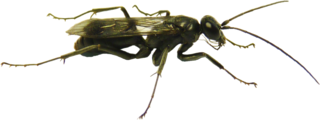 W
WDeuteragenia ossarium, the Bone-house Wasp, is a species of pompilid wasp discovered in southeast China in 2014. It was named after graveyard bone-houses or ossuaries, from its characteristic use of a vestibular cell filled with dead ants which is built by the female wasp to close the nest after she lays her eggs.
 W
WAlong with parasites and disease, predation is a threat to sheep health and consequently to the profitability of sheep raising. Sheep have very little ability to defend themselves, even when compared with other prey species kept as livestock. Even if sheep are not directly bitten or survive an attack, they may die from panic or from injuries sustained.
 W
WThe ecology of fear is a conceptual framework describing the psychological impact that predator-induced stress experienced by animals has on populations and ecosystems. Within ecology, the impact of predators has been traditionally viewed as limited to the animals that they directly kill, while the ecology of fear advances evidence that predators may have a far more substantial impact on the individuals that they predate, reducing fecundity, survival and population sizes. To avoid being killed, animals that are preyed upon will employ anti-predator defenses which aid survival but may carry substantial costs.
 W
WEcoSim is an individual-based predator-prey ecosystem simulation in which agents can evolve. It has been designed to investigate several broad ecological questions, as well as long-term evolutionary patterns and processes such as speciation and macroevolution. EcoSim has been designed by Robin Gras at the University of Windsor in 2009 and it is still currently used for research in his Bioinformatics and Ecosystem Simulation Lab.
 W
WEgg predation is a feeding strategy by animals (ovivores) including fish, birds, snakes and insects, in which they consume the eggs of other species. Since an egg represents a complete organism at one stage of its life cycle, eating an egg is a form of predation, the killing of another organism for food.
 W
WThe spotted hyena is the most carnivorous member of the Hyaenidae. Unlike its brown and striped cousins, the spotted hyena is a predator, not a scavenger; this has been shown since the 1960s. One of the earliest studies to demonstrate their hunting abilities was done by Hans Kruuk, an African wildlife ecologist, and he showed through a 7-year study of hyena populations in Africa that spotted hyenas hunt as much as lions, and with later studies this has been shown to be the average in all areas of Africa. However spotted hyenas remain mislabeled as scavengers, often even by ecologists and wildlife documentary channels.
 W
WThe rock firefinch is a species of estrildid finch found in the Jos Plateau of central Nigeria and in Cameroon. It has an estimated global extent of occurrence of 29,000 km². The rock firefinch was discovered recently, in 1998. Rock firefinches fall in the family Estrildidae, which contains small passerine birds of the Old World and Australasia. Rock firefinches seem to be most closely related to Mali firefinches and Chad firefinches. The species name sanguinodorsalis means blood-red back, which was chosen because it describes the vibrant red back color of the male plumage. The status of the species is evaluated as Least Concern.
 W
WA functional response in ecology is the intake rate of a consumer as a function of food density. It is associated with the numerical response, which is the reproduction rate of a consumer as a function of food density. Following C. S. Holling, functional responses are generally classified into three types, which are called Holling's type I, II, and III.
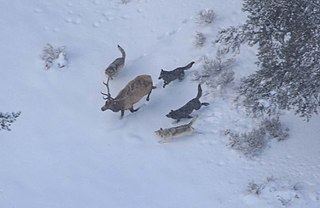 W
WSingle wolves or mated pairs typically have higher success rates in hunting than do large packs; single wolves have occasionally been observed to kill large prey such as moose, bison and muskoxen unaided. This contrasts with the commonly held belief that larger packs benefit from cooperative hunting to bring down large game. The size of a wolf hunting pack is related to the number of pups that survived the previous winter, adult survival, and the rate of dispersing wolves leaving the pack. The optimal pack size for hunting elk is four wolves, and for bison a large pack size is more successful.
 W
WThe Lotka–Volterra equations, also known as the predator–prey equations, are a pair of first-order nonlinear differential equations, frequently used to describe the dynamics of biological systems in which two species interact, one as a predator and the other as prey. The populations change through time according to the pair of equations:
 W
WMatriphagy is the consumption of the mother by her offspring. The behavior generally takes place within the first few weeks of life and has been documented in some species of insects, nematode worms, pseudoscorpions, and other arachnids as well as in caecilian amphibians.
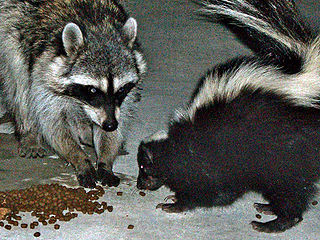 W
WThe mesopredator release hypothesis is an ecological theory used to describe the interrelated population dynamics between apex predators and mesopredators within an ecosystem, such that a collapsing population of the former results in dramatically-increased populations of the latter. This hypothesis describes the phenomenon of trophic cascade in specific terrestrial communities.
 W
WNocturnality is an animal behavior characterized by being active during the night and sleeping during the day. The common adjective is "nocturnal", versus diurnal meaning the opposite.
 W
WA pack hunter or social predator is a predatory animal which hunts its prey by working together with other members of its species. Normally animals hunting in this way are closely related, and with the exceptions of chimpanzees where only males normally hunt, all individuals in a family group contribute to hunting. When hunting cooperation is across two or more species, the broader term cooperative hunting is commonly used.
 W
WPhagomimicry is a defensive behaviour of sea hares, in which the animal ejects a mixture of chemicals, which mimic food, and overwhelm the senses of their predator, giving the sea hare a chance to escape. The typical defence response of the sea hare to a predator is to release two chemicals - ink from the ink gland and opaline from the opaline gland. While ink creates a dark, diffuse cloud in the water which disrupts the sensory perception of the predator by acting as a smokescreen and as a decoy, the opaline, which affects the senses dealing with feeding, causes the predator to instinctively attack the cloud of chemicals as if it were indeed food. This ink is able to mimic food by having a high concentration of amino acids and other compounds that are normally found in food, and the attack behaviour of the predator allows the sea-hares the opportunity to escape.
 W
WA predator trap is a natural hazard where prey animals become trapped or incapacitated, and the attracted predators suffer the same fate. More predators, scavengers, insects and birds become attracted to this mounting accumulation of carrion, until a wide variety of animals are caught and ultimately killed by the hazard. This may happen many times over. Typically, the number of lured predators will greatly outnumber the prey, thus providing the name.
 W
WPrey drive is the instinctive inclination of a carnivore to find, pursue and capture prey. The term is chiefly used to describe and analyse habits in dog training.
 W
WThe predation problem or predation argument refers to the consideration of the harms experienced by animals due to predation as a moral problem, that humans may or may not have an obligation to work towards preventing. Discourse on this topic has, by and large, been held within the disciplines of animal and environmental ethics. The issue has particularly been discussed in relation to animal rights and wild animal suffering. Some critics have considered an obligation to prevent predation as untenable or absurd and have used the position as a reductio ad absurdum to reject the concept of animal rights altogether. Others have criticized any obligation implied by the animal rights position as environmentally harmful.
 W
WStomorhina is a genus of flies in the family Rhiniidae.
 W
WStomorhina lunata is a species of fly in the family Rhiniidae first described by Johan Christian Fabricius in 1805.
 W
WSurplus killing, also known as excessive killing, killing for sport, henhouse syndrome, or overkill, is a common behavior exhibited by predators, in which they kill more prey than they can immediately eat and then they either cache or abandon the remainder. The term was invented by Dutch biologist Hans Kruuk after studying spotted hyenas in Africa and red foxes in England. Some of the other animals which have been observed engaging in surplus killing include orcas, zooplankton, humans, damselfly naiads, predaceous mites, martens, weasels, honey badgers, jaguar, leopards, lions, wolves, spiders, brown bears, american black bears, polar bears, coyotes, lynxes, minks, raccoons and dogs.
 W
WThroat clamp is method of subduing often seen in predatory felids and occasionally canids and hyaenids. It involves the predator grasping the throat of the prey and clamping tight so that the windpipe is either crushed or blocked. Cats use this to kill prey while dogs and hyenas use this to weaken the prey before eating it, generally alive. It's more often used than the muzzle clamp and is generally safer, though slower. It is usually and most effective when positioned as near to the mandible as the carnivore can get. Between the larynx and the jaw, the windpipe is surrounded with less cartilage and is more malleable, while lower down, near the chest, the passageway would be increasingly harder to collapse, so the throat clamp is usually positioned high up on the animal's neck.
 W
WUnderwater camouflage is the set of methods of achieving crypsis—avoidance of observation—that allows otherwise visible aquatic organisms to remain unnoticed by other organisms such as predators or prey.
 W
WVolvation, is a defensive behavior in certain animals, in which the animal rolls its own body into a ball, presenting only the hardest parts of its integument, or its spines to predators.